1 of 44
Download to read offline
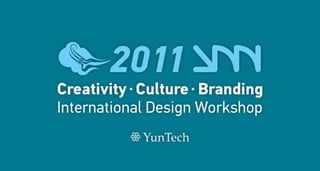




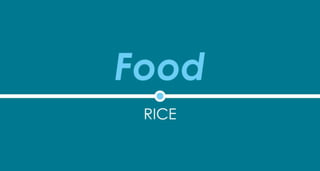
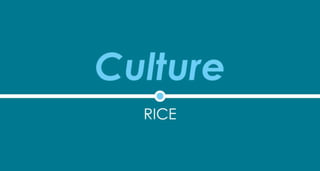



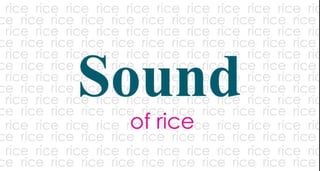
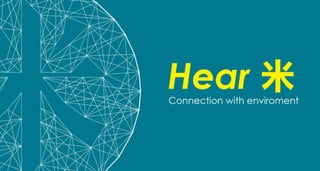
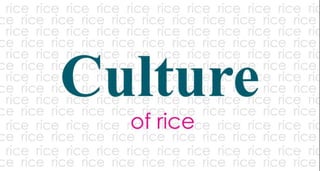
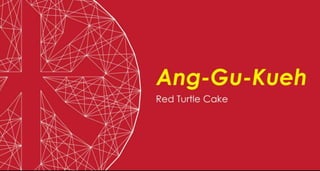
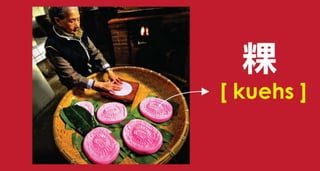
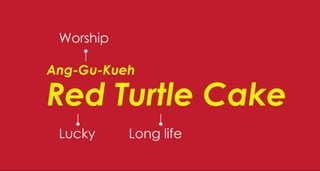
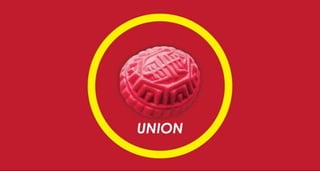
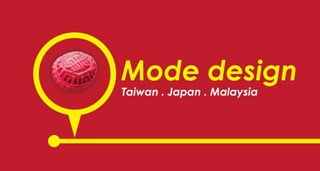

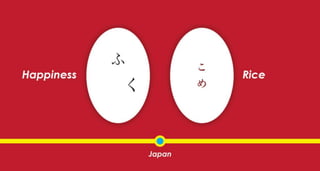

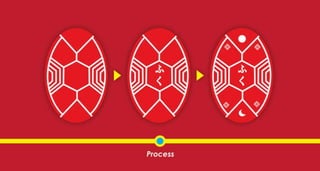







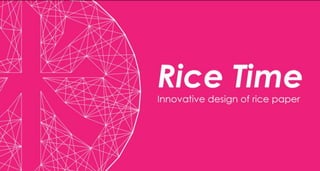





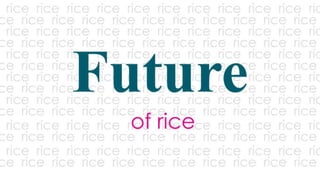
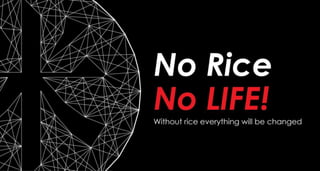

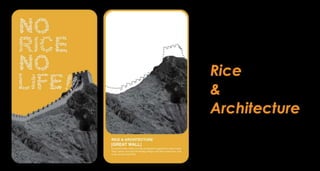

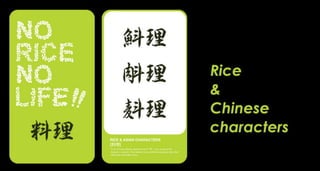

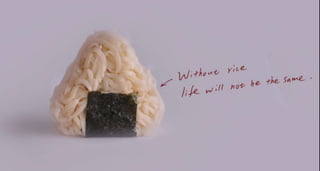
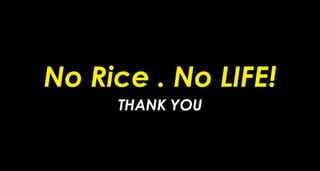
Ad
Recommended
Stelo
SteloIntraespo - Organiza??o Mundial para o Desenvolvimento da Economia Esperantista
?
Eseo pri Stelo, la monunuo de la esperantistojCv ahmed emad eldin(1)
Cv ahmed emad eldin(1)ahmed emad
?
Ahmed Emad El-din Fikri Ibrahim is an Egyptian national born on February 11, 1991 in Mansoura, Egypt. He graduated from Mansoura University's Faculty of Commerce in 2013 with a Bachelor of Commerce degree. He is fluent in Arabic and English. His qualifications include certificates in Oracle ERP financial modules, financial accounting, ICDL, Peachtree, and general conversation skills. He has skills in Microsoft Office, operating systems, and 10 years of internet experience. His work experience includes implementing Oracle E-Business Suite modules for several companies and training as an Oracle financial consultant.Membumikan energi rahmat allah
Membumikan energi rahmat allahWiyanto Suud
?
Rangkuman dokumen tersebut dalam 3 kalimat:
Bencana alam seperti gempa bumi yang terjadi belakangan ini bukan tanda hilangnya rahmat Allah, melainkan ujian bagi manusia untuk menyadari bahwa hanya Allah tempat berlindung. Perbedaan dan cobaan dianggap sebagai rahmat karena mengandung hikmah dan kesempatan berbuat kebajikan. Manusia tidak boleh putus asa dari rahmat Allah meski diuji.Pendahuluan membuat dokumen, presentasi, dan spreadsheet pada open office 2.2
Pendahuluan membuat dokumen, presentasi, dan spreadsheet pada open office 2.2Irsal Shabirin
?
Dokumen tersebut memberikan penjelasan tentang cara membuat dokumen, presentasi, dan spreadsheet menggunakan OpenOffice.org. Di antaranya menjelaskan tentang memulai OpenOffice Writer dan Impress, format dokumen yang didukung, serta cara dasar membuat dokumen, presentasi, dan spreadsheet.1027 µœ∞
1027 µœ∞Visual Cognition and Modeling Lab
?
This document discusses standardizing data values using PROC STANDARD in SAS. It provides the basic syntax for PROC STANDARD and explains some of the options like DATA, OUT, MEAN, STD, and VARDEF. It also gives examples of using PROC STANDARD to standardize variables with mean 80 and standard deviation 5, and outputting the standardized data to a new dataset. SAS functions like SUM, MEAN, SQRT are demonstrated. The RNAD function is explained to generate random binomial values.T 11transformacionessocialesyculturales-110129140529-phpapp01Bego?a Garrido Labrador
?
Este documento describe las transformaciones demogr®¢ficas, sociales y culturales que tuvo lugar en Espa?a entre finales del siglo XVIII y principios del XX. Explica que la poblaci®Æn creci®Æ moderadamente debido a las altas tasas de mortalidad y natalidad, y que hubo movimientos migratorios internos e internacionales. Tambi®¶n describe la estructura social de la ®¶poca, incluyendo las clases altas, burgues®™a, clases medias, populares y marginados. Por ®≤ltimo, analiza el surgimiento del movimiento obrero y la influencia del socialismo1710 mr victor tay panel discussion
1710 mr victor tay panel discussionAge Friendly Workforce Asia
?
Victor Tay discussed how Asia is adapting business practices to changing demographics. [1] Asia accounts for 60% of the world's population and is experiencing the fastest population growth and urbanization. [2] Asian economies are becoming an increasingly large share of global GDP as countries specialize their workforces in different industries. [3] Increasing life expectancies mean workers will postpone retirement, while a surging middle class will impact wealth creation and wage increases. Adapting to trends like an aging population and the "silver economy" will be important for business competitiveness in Asia.0945 dr carol tan opening plenary panel discussion
0945 dr carol tan opening plenary panel discussionAge Friendly Workforce Asia
?
The document discusses concerns about managing mature employees in organizations as the average employee age rises. The top concern is that physical job requirements may exceed the abilities of mature and older workers. Additionally, health and insurance costs are expected to increase with an aging workforce. Mature employees are also sometimes unwilling to change or learn new technologies. Flexible schedules are not always available to accommodate part-time or flexible work arrangements for older employees.2013, PRESENTATION, Mongolia°Øs potentially sustainable competitive advantage ...
2013, PRESENTATION, Mongolia°Øs potentially sustainable competitive advantage ...The Business Council of Mongolia
?
The document summarizes Mongolia's potential competitive advantage in minerals like copper and coking coal due to its proximity and access to China's large market. Key factors that could realize this advantage are Mongolia's abundance and quality of resources, supportive infrastructure investments, and political stability. While Mongolia has seen strong GDP and FDI growth from mining in recent years, 2013 performance was mixed due to issues like coal export declines, lowering foreign investment, and political uncertainty. Progress is being made on issues like inflation, fiscal surplus, and major project developments, but Mongolia must continue efforts to achieve a sustainable advantage through value-added processing and preferred supplier status. Total investment needs for Mongolia's development from 2010-2015 are estimated at $Kuliah pip 1
Kuliah pip 1dian_m
?
Dokumen tersebut membahas tentang perkembangan pengetahuan menjadi ilmu pengetahuan, dimulai dari pengalaman sehari-hari manusia prasejarah hingga berkembang menjadi ilmu yang terstruktur melalui pengamatan dan pengelompokan pengetahuan. Dokumen ini juga menjelaskan sifat seorang ilmuwan dan bagaimana mahasiswa dilatih untuk menghasilkan penemuan baru melalui penelitian.Radiation_Pollution_eLearning_Module.pptx
Radiation_Pollution_eLearning_Module.pptxkanishkaarora1496
?
? Radiation pollution is caused by passages and electromagnetic radiation emitted from
natural and man-made sources.
? These may include neutrons, x-rays, ultraviolet radiation, microwaves and alpha passages.
? Radiation pollution also includes controlled disposal of radioactive wastes from nuclear
reactors.
? Radiation pollution may have biological, ecological and socio-economic effects.
? The amount of injury caused by radiation from a radioactive isotope depends on its half-life,
and on how quickly it is absorbed and how fast the body of the organism repairs the
damage.
? Most studies of the harmful effects of radiation have been performed on single-celled
organisms.
? Obviously, the situation is more complex in humans and other multi-cellular organisms,
because a single cell damaged by radiation may indirectly affect other cells in the individual.
? The most sensitive regions of the human body appear to be those which have many actively
dividing cells, such as the skin, gonads, intestine and tissues that grow blood cells (spleen,
bone marrow, and lymph organs).
? Radiation is toxic because the emitted radiations form ions when they interact with
biological molecules in cells and tissues.
? These ions can then form free radicals, which damage proteins, membranes and nucleic
acids.
? Radioactive radiation can damage DNA (deoxyribonucleic acid) by destroying individual
bases including thymine, breaking single strands and double strands, cross-linking different
DNA strands and cross-linking DNA and proteins.
? Damage to DNA can lead to cancers, birth defects, and even death.FLOURISHING THROUGH SENSES: FROM Ab°ÆSENSE°Ø to Pre°ÆSENSE°Ø to Es°ÆSENSE°Ø to Re-...
FLOURISHING THROUGH SENSES: FROM Ab°ÆSENSE°Ø to Pre°ÆSENSE°Ø to Es°ÆSENSE°Ø to Re-...Samuel Thuo
?
A presentation By Samuel Thuo, The Senses Architect to FxD Community for a PechaKucha Format titled: Flourishing Through Senses: From Ab°Æsense°Ø to Pre°Æsense°Ø to Es°Æsense°Ø to Re-sensing the World
In a world where skyscrapers rise and senses fall, this presentation explores how architecture can either numb or nourish our humanity.
? Act I ®C Ab°Æsense°Ø: The Crisis of Sensory Deprivation
We begin in the concrete jungle, a habitat built for function, but not for feeling. Glass, steel, white walls. Children indoors, glued to screens. Cities that silence rain and sterilize smell. We've lost touch with the sensory essence of living. We're living in a pandemic of nonsense environments.
? Act II ®C Pre°Æsense°Ø: The Power of Sensory Grounding
We rediscover presence in barefoot steps on soil, bark under fingertips, beams of sunlight through timber, whispers of wind and scent of wet earth. Flourishing starts when all senses are awake, not just sight. It°Øs a return to how we once knew the world, intimately, bodily.
? Act III ®C Es°Æsense°Ø: Remembering Our Sensory Nature
Flourishing is rooted in our essence, as sensing, emotional beings. We learn from nature°Øs flow, from indigenous African architecture, from animals in tune with their environment, and even from cooking. These are acts of multisensory design, where wisdom is embodied, not abstract. Beauty is not in the eyes of the beholder, but all the senses of the beholder.
? Act IV ®C Re-sensing: A Vision for the Future
It°Øs time to re-sense the world. Pallasmaa said that architecture is the art of reconciliation between ourselves and the world, and this mediation happens through the senses. We must go back to creating senseful environments that allow this dialogue between us and the world. Homes like Falling water that merge with land. Playful spaces for children. Healing cities filled with texture, sound, and smell. Bodies that root into nature. We must shift from building cold structures to designing sensescapes that foster wellbeing.Exploratory Experiences Built by Design (UXPA25)
Exploratory Experiences Built by Design (UXPA25)Design for Context
?
Discovery°≠ it°Øs more than just finding a piece of information to complete a specific task. It°Øs more than just search°≠ it is uncovering the unexpected, the °∞aha!°± moment, or the deeper story behind a familiar subject. It is an experience ®C the user experience ®C within a digital space.
This presentation begins by looking at some design examples within the cultural heritage domain that are crafted to foster and encourage curiosity, leading to discovery. Examples draw on different subjects, particularly ones that blend content from different genres and countries. We will unpack design approaches that deliberately invite curiosity and °∞horizontal navigation°± through different information paths. Then, we will look more closely at some techniques that UX designers can use to shape these experiences, such as how to leverage the user°Øs context of use, how to integrate cultural contexts, and how to gracefully find meaning in large scale data sets.(18+ CLIP!) Sophie Rain Spiderman Viral Video Clip Sophie Rain Original Video
(18+ CLIP!) Sophie Rain Spiderman Viral Video Clip Sophie Rain Original Videojamesfolkner123
?
DOWNLOAD LINK??? https://rebrand.ly/656e26/???
Full Download link: ??https://rebrand.ly/656e26/ ??
Sophie Rain Spiderman Viral Video Original Viral video took the internet by storm and amazed viewers on various social media platforms. Sophie Rain Spiderman Video, a young and talented digital creator, recently became famous thanks to this interesting video.AI-Driven-Personalization-in-UX-Designing-for-One-in-a-Million.pdf
AI-Driven-Personalization-in-UX-Designing-for-One-in-a-Million.pdfSultan Shalakhti
?
Why you should attend this event
Talk Title: AI-Driven Personalization in UX: Designing for One in a Million
In this session, Sultan Shalakhti explores how artificial intelligence is reshaping user experience through smart, adaptive personalization. From e-commerce to banking, personalized design has become a key differentiator°™when done right. Learn how to apply AI tools to enhance user journeys, balance personalization with privacy, and build experiences that feel uniquely human. This talk blends strategy, ethics, and real-world use cases for UX professionals ready to embrace the future.
?
????? ??????: ??????? ??????? ??????? ????????? ?? ????? ????????: ????? ???? ??? ??? ??? ???
??? ??????:
?????? ????? ????? ?? ??? ?????? ?? ???? ??? ??? ???? ?????? ????????? ????? ????? ???????? ?? ???? ??????? ????? ??????????. ?? ??????? ??????????? ??? ?????? ??????? ???? ??????? ?????? ?????? ?? ???? ???????°™???? ??? ??? ?????? ?????? ??????. ?????? ??? ????? ????? ????? ?????? ????????? ?????? ??????? ???????? ?????? ??????? ??? ??????? ?????????? ????? ????? ????? ???? ????? ????????. ???? ???? ???? ??? ????????????? ???????????? ??????? ?????? ???????? ????????? ?? ???? UX.
What you will learn in this session
Understand the Core Concepts of AI-Driven Personalization
Explore UX Design Strategies for Hyper-Personalization
Identify Key Tools and Technologies Behind Personalization
Evaluate the Ethical and Privacy Considerations
Apply Personalization Tactics to Real UX ChallengesExploring the Diverse Types of Textual Aids
Exploring the Diverse Types of Textual Aidsjenicahmendoza1
?
Exploring the Diverse Types of Textual Aids◊Ó–¬∞Ê√¿π˙Õ˛Àπøµ–«¥Û—ß∆’¿≠ÃÿŒ¨∂˚∑÷–£±œ“µ÷§£®±´∞¬± ±œ“µ÷§ È£©‘≠∞Ê∂®÷∆
◊Ó–¬∞Ê√¿π˙Õ˛Àπøµ–«¥Û—ß∆’¿≠ÃÿŒ¨∂˚∑÷–£±œ“µ÷§£®±´∞¬± ±œ“µ÷§ È£©‘≠∞Ê∂®÷∆taqyea
?
2025‘≠∞ÊÕ˛Àπøµ–«¥Û—ß∆’¿≠ÃÿŒ¨∂˚∑÷–£±œ“µ÷§ ÈpdfµÁ◊”∞Ê°æqfi±1954292140°ø√¿π˙±œ“µ÷§∞Ï¿ÌUWPÕ˛Àπøµ–«¥Û—ß∆’¿≠ÃÿŒ¨∂˚∑÷–£±œ“µ÷§ È∂‡…Ÿ«Æ£ø°æqfi±1954292140°ø∫£Õ‚∏˜¥Û—ßDiploma∞ʱ棨“ÚŒ™“fl«È—ß–£Õ∆≥Ÿ∑¢∑≈÷§ È°¢÷§ È‘≠º˛∂™ ß≤π∞Ï°¢√ª”–’˝≥£±œ“µŒ¥ƒ‹»œ÷§—ß¿˙√Ê¡ŸæÕ“µÃ·π©Ω‚æˆ∞Ï∑®°£µ±‘‚”ˆπ“ø∆°¢øıøŒµº÷¬Œfi∑®–fi¬˙—ß∑÷£¨ªÚ’fl÷±Ω”±ª—ß–£ÕÀ—ߣ¨◊Ó∫ÛŒfi∑®±œ“µƒ√≤ªµΩ±œ“µ÷§°£¥À ±µƒƒ„“ª∂® ÷◊„Œfi¥Î£¨“ÚŒ™¡Ù—ß“ª≥°£¨√ª”–ªÒµ√±œ“µ÷§“‘º∞—ß¿˙÷§√˜øœ∂® «Œfi∑®∏¯◊‘º∫∫Õ∏∏ƒ∏“ª∏ˆΩª¥˙µƒ°£
°æ∏¥øÃÕ˛Àπøµ–«¥Û—ß∆’¿≠ÃÿŒ¨∂˚∑÷–£≥…º®µ•–≈∑‚,Buy University of Wisconsin-Platteville Transcripts°ø
π∫¬Ú»’∫´≥…º®µ•°¢”¢π˙¥Û—ß≥…º®µ•°¢√¿π˙¥Û—ß≥…º®µ•°¢∞ƒ÷fi¥Û—ß≥…º®µ•°¢º”ƒ√¥Û¥Û—ß≥…º®µ•£®qŒ¢1954292140£©–¬º”∆¬¥Û—ß≥…º®µ•°¢–¬Œ˜¿º¥Û—ß≥…º®µ•°¢∞Æ∂˚¿º≥…º®µ•°¢Œ˜∞‡—¿≥…º®µ•°¢µ¬π˙≥…º®µ•°£≥…º®µ•µƒ“‚“Â÷˜“™ÃÂœ÷‘⁄÷§√˜—ßœ∞ƒ‹¡¶°¢∆¿π¿—ß ı±≥æ∞°¢’π æ◊€∫œÀÿ÷ °¢Ã·∏fl¬º»°¬ £¨“‘º∞ «◊˜Œ™¡Ù–≈»œ÷§…Í«Î≤ƒ¡œµƒ“ª≤ø∑÷°£
Õ˛Àπøµ–«¥Û—ß∆’¿≠ÃÿŒ¨∂˚∑÷–£≥…º®µ•ƒ‹πªÃÂœ÷ƒ˙µƒµƒ—ßœ∞ƒ‹¡¶£¨∞¸¿®Õ˛Àπøµ–«¥Û—ß∆’¿≠ÃÿŒ¨∂˚∑÷–£øŒ≥Ã≥…º®°¢◊®“µƒ‹¡¶°¢—–æøƒ‹¡¶°££®qŒ¢1954292140£©æflÿ¥Àµ£¨≥…º®±®∏ʵ•Õ®≥£∞¸∫¨—ß…˙µƒ—ßœ∞ººƒ‹”Îœ∞πfl°¢∏˜ø∆≥…º®“‘º∞¿œ ¶∆¿”Ôµ»≤ø∑÷£¨“Ú¥À£¨≥…º®µ•≤ªΩˆ «—ß…˙—ß ıƒ‹¡¶µƒ÷§√˜£¨“≤ «∆¿π¿—ß…˙ «∑Ò ∫œƒ≥∏ˆΩÔ˝œÓƒøµƒ÷ÿ“™“¿æ›£°
Œ“√«≥–≈µ≤…”√µƒ «—ß–£‘≠∞Ê÷Ω’≈£®‘≠∞Ê÷Ω÷ °¢µ◊…´°¢Œ∆¬∑£©Œ“√«π§≥ß”µ”–»´Ã◊Ω¯ø⁄‘≠◊∞…˱∏£¨Ãÿ ‚𧓒∂º «≤…”√≤ªÕ¨ª˙∆˜÷∆◊˜£¨∑¬’Ê∂»ª˘±æø…“‘¥ÔµΩ100%£¨À˘”–≥…∆∑“‘º∞𧓒–ßπ˚∂ºø…÷«∞∏¯øժߒπ 棨≤ª¬˙“‚ø…“‘∏˘æ›øժߓ™«ÛΩ¯––µ˜’˚£¨÷±µΩ¬˙“‚Œ™÷π£°
°æ÷˜”™œÓƒø°ø
“ª°¢π§◊˜Œ¥»∑∂®£¨ªÿπ˙–Ëœ»∏¯∏∏ƒ∏°¢«◊∆›≈Û”—ø¥œ¬Œƒ∆浃«Èøˆ£¨∞Ͽ̱œ“µ÷§|∞Ï¿ÌŒƒ∆æ: ¬Ú¥Û—ß±œ“µ÷§|¬Ú¥Û—ߌƒ∆æ°æqfi±1954292140°øÕ˛Àπøµ–«¥Û—ß∆’¿≠ÃÿŒ¨∂˚∑÷–£—ߌª÷§√˜ È»Á∫Œ∞Ͽ̅ͫΣø
∂˛°¢ªÿπ˙Ω¯ÀΩ∆Û°¢Õ‚∆Û°¢◊‘º∫◊ˆ…˙“‚µƒ«Èøˆ£¨’‚–©µ•Œª «≤ª≤ȗرœ“µ÷§’ÊŒ±µƒ£¨∂¯«“π˙ƒ⁄√ª”–«˛µ¿»•≤È—Øπ˙Õ‚Œƒ∆浃’ʺŸ£¨“≤≤ª–Ë“™Ã·π©’Ê µΩÔ˝≤ø»œ÷§°£º¯”⁄¥À£¨∞Ï¿Ì√¿π˙≥…º®µ•Õ˛Àπøµ–«¥Û—ß∆’¿≠ÃÿŒ¨∂˚∑÷–£±œ“µ÷§°æqfi±1954292140°øπ˙Õ‚¥Û—ß±œ“µ÷§, Œƒ∆æ∞Ï¿Ì, π˙Õ‚Œƒ∆æ∞Ï¿Ì, ¡Ù–≈Õ¯»œ÷§More Related Content
Viewers also liked (9)
T 11transformacionessocialesyculturales-110129140529-phpapp01Bego?a Garrido Labrador
?
Este documento describe las transformaciones demogr®¢ficas, sociales y culturales que tuvo lugar en Espa?a entre finales del siglo XVIII y principios del XX. Explica que la poblaci®Æn creci®Æ moderadamente debido a las altas tasas de mortalidad y natalidad, y que hubo movimientos migratorios internos e internacionales. Tambi®¶n describe la estructura social de la ®¶poca, incluyendo las clases altas, burgues®™a, clases medias, populares y marginados. Por ®≤ltimo, analiza el surgimiento del movimiento obrero y la influencia del socialismo1710 mr victor tay panel discussion
1710 mr victor tay panel discussionAge Friendly Workforce Asia
?
Victor Tay discussed how Asia is adapting business practices to changing demographics. [1] Asia accounts for 60% of the world's population and is experiencing the fastest population growth and urbanization. [2] Asian economies are becoming an increasingly large share of global GDP as countries specialize their workforces in different industries. [3] Increasing life expectancies mean workers will postpone retirement, while a surging middle class will impact wealth creation and wage increases. Adapting to trends like an aging population and the "silver economy" will be important for business competitiveness in Asia.0945 dr carol tan opening plenary panel discussion
0945 dr carol tan opening plenary panel discussionAge Friendly Workforce Asia
?
The document discusses concerns about managing mature employees in organizations as the average employee age rises. The top concern is that physical job requirements may exceed the abilities of mature and older workers. Additionally, health and insurance costs are expected to increase with an aging workforce. Mature employees are also sometimes unwilling to change or learn new technologies. Flexible schedules are not always available to accommodate part-time or flexible work arrangements for older employees.2013, PRESENTATION, Mongolia°Øs potentially sustainable competitive advantage ...
2013, PRESENTATION, Mongolia°Øs potentially sustainable competitive advantage ...The Business Council of Mongolia
?
The document summarizes Mongolia's potential competitive advantage in minerals like copper and coking coal due to its proximity and access to China's large market. Key factors that could realize this advantage are Mongolia's abundance and quality of resources, supportive infrastructure investments, and political stability. While Mongolia has seen strong GDP and FDI growth from mining in recent years, 2013 performance was mixed due to issues like coal export declines, lowering foreign investment, and political uncertainty. Progress is being made on issues like inflation, fiscal surplus, and major project developments, but Mongolia must continue efforts to achieve a sustainable advantage through value-added processing and preferred supplier status. Total investment needs for Mongolia's development from 2010-2015 are estimated at $Kuliah pip 1
Kuliah pip 1dian_m
?
Dokumen tersebut membahas tentang perkembangan pengetahuan menjadi ilmu pengetahuan, dimulai dari pengalaman sehari-hari manusia prasejarah hingga berkembang menjadi ilmu yang terstruktur melalui pengamatan dan pengelompokan pengetahuan. Dokumen ini juga menjelaskan sifat seorang ilmuwan dan bagaimana mahasiswa dilatih untuk menghasilkan penemuan baru melalui penelitian.2013, PRESENTATION, Mongolia°Øs potentially sustainable competitive advantage ...
2013, PRESENTATION, Mongolia°Øs potentially sustainable competitive advantage ...The Business Council of Mongolia
?
Recently uploaded (20)
Radiation_Pollution_eLearning_Module.pptx
Radiation_Pollution_eLearning_Module.pptxkanishkaarora1496
?
? Radiation pollution is caused by passages and electromagnetic radiation emitted from
natural and man-made sources.
? These may include neutrons, x-rays, ultraviolet radiation, microwaves and alpha passages.
? Radiation pollution also includes controlled disposal of radioactive wastes from nuclear
reactors.
? Radiation pollution may have biological, ecological and socio-economic effects.
? The amount of injury caused by radiation from a radioactive isotope depends on its half-life,
and on how quickly it is absorbed and how fast the body of the organism repairs the
damage.
? Most studies of the harmful effects of radiation have been performed on single-celled
organisms.
? Obviously, the situation is more complex in humans and other multi-cellular organisms,
because a single cell damaged by radiation may indirectly affect other cells in the individual.
? The most sensitive regions of the human body appear to be those which have many actively
dividing cells, such as the skin, gonads, intestine and tissues that grow blood cells (spleen,
bone marrow, and lymph organs).
? Radiation is toxic because the emitted radiations form ions when they interact with
biological molecules in cells and tissues.
? These ions can then form free radicals, which damage proteins, membranes and nucleic
acids.
? Radioactive radiation can damage DNA (deoxyribonucleic acid) by destroying individual
bases including thymine, breaking single strands and double strands, cross-linking different
DNA strands and cross-linking DNA and proteins.
? Damage to DNA can lead to cancers, birth defects, and even death.FLOURISHING THROUGH SENSES: FROM Ab°ÆSENSE°Ø to Pre°ÆSENSE°Ø to Es°ÆSENSE°Ø to Re-...
FLOURISHING THROUGH SENSES: FROM Ab°ÆSENSE°Ø to Pre°ÆSENSE°Ø to Es°ÆSENSE°Ø to Re-...Samuel Thuo
?
A presentation By Samuel Thuo, The Senses Architect to FxD Community for a PechaKucha Format titled: Flourishing Through Senses: From Ab°Æsense°Ø to Pre°Æsense°Ø to Es°Æsense°Ø to Re-sensing the World
In a world where skyscrapers rise and senses fall, this presentation explores how architecture can either numb or nourish our humanity.
? Act I ®C Ab°Æsense°Ø: The Crisis of Sensory Deprivation
We begin in the concrete jungle, a habitat built for function, but not for feeling. Glass, steel, white walls. Children indoors, glued to screens. Cities that silence rain and sterilize smell. We've lost touch with the sensory essence of living. We're living in a pandemic of nonsense environments.
? Act II ®C Pre°Æsense°Ø: The Power of Sensory Grounding
We rediscover presence in barefoot steps on soil, bark under fingertips, beams of sunlight through timber, whispers of wind and scent of wet earth. Flourishing starts when all senses are awake, not just sight. It°Øs a return to how we once knew the world, intimately, bodily.
? Act III ®C Es°Æsense°Ø: Remembering Our Sensory Nature
Flourishing is rooted in our essence, as sensing, emotional beings. We learn from nature°Øs flow, from indigenous African architecture, from animals in tune with their environment, and even from cooking. These are acts of multisensory design, where wisdom is embodied, not abstract. Beauty is not in the eyes of the beholder, but all the senses of the beholder.
? Act IV ®C Re-sensing: A Vision for the Future
It°Øs time to re-sense the world. Pallasmaa said that architecture is the art of reconciliation between ourselves and the world, and this mediation happens through the senses. We must go back to creating senseful environments that allow this dialogue between us and the world. Homes like Falling water that merge with land. Playful spaces for children. Healing cities filled with texture, sound, and smell. Bodies that root into nature. We must shift from building cold structures to designing sensescapes that foster wellbeing.Exploratory Experiences Built by Design (UXPA25)
Exploratory Experiences Built by Design (UXPA25)Design for Context
?
Discovery°≠ it°Øs more than just finding a piece of information to complete a specific task. It°Øs more than just search°≠ it is uncovering the unexpected, the °∞aha!°± moment, or the deeper story behind a familiar subject. It is an experience ®C the user experience ®C within a digital space.
This presentation begins by looking at some design examples within the cultural heritage domain that are crafted to foster and encourage curiosity, leading to discovery. Examples draw on different subjects, particularly ones that blend content from different genres and countries. We will unpack design approaches that deliberately invite curiosity and °∞horizontal navigation°± through different information paths. Then, we will look more closely at some techniques that UX designers can use to shape these experiences, such as how to leverage the user°Øs context of use, how to integrate cultural contexts, and how to gracefully find meaning in large scale data sets.(18+ CLIP!) Sophie Rain Spiderman Viral Video Clip Sophie Rain Original Video
(18+ CLIP!) Sophie Rain Spiderman Viral Video Clip Sophie Rain Original Videojamesfolkner123
?
DOWNLOAD LINK??? https://rebrand.ly/656e26/???
Full Download link: ??https://rebrand.ly/656e26/ ??
Sophie Rain Spiderman Viral Video Original Viral video took the internet by storm and amazed viewers on various social media platforms. Sophie Rain Spiderman Video, a young and talented digital creator, recently became famous thanks to this interesting video.AI-Driven-Personalization-in-UX-Designing-for-One-in-a-Million.pdf
AI-Driven-Personalization-in-UX-Designing-for-One-in-a-Million.pdfSultan Shalakhti
?
Why you should attend this event
Talk Title: AI-Driven Personalization in UX: Designing for One in a Million
In this session, Sultan Shalakhti explores how artificial intelligence is reshaping user experience through smart, adaptive personalization. From e-commerce to banking, personalized design has become a key differentiator°™when done right. Learn how to apply AI tools to enhance user journeys, balance personalization with privacy, and build experiences that feel uniquely human. This talk blends strategy, ethics, and real-world use cases for UX professionals ready to embrace the future.
?
????? ??????: ??????? ??????? ??????? ????????? ?? ????? ????????: ????? ???? ??? ??? ??? ???
??? ??????:
?????? ????? ????? ?? ??? ?????? ?? ???? ??? ??? ???? ?????? ????????? ????? ????? ???????? ?? ???? ??????? ????? ??????????. ?? ??????? ??????????? ??? ?????? ??????? ???? ??????? ?????? ?????? ?? ???? ???????°™???? ??? ??? ?????? ?????? ??????. ?????? ??? ????? ????? ????? ?????? ????????? ?????? ??????? ???????? ?????? ??????? ??? ??????? ?????????? ????? ????? ????? ???? ????? ????????. ???? ???? ???? ??? ????????????? ???????????? ??????? ?????? ???????? ????????? ?? ???? UX.
What you will learn in this session
Understand the Core Concepts of AI-Driven Personalization
Explore UX Design Strategies for Hyper-Personalization
Identify Key Tools and Technologies Behind Personalization
Evaluate the Ethical and Privacy Considerations
Apply Personalization Tactics to Real UX ChallengesExploring the Diverse Types of Textual Aids
Exploring the Diverse Types of Textual Aidsjenicahmendoza1
?
Exploring the Diverse Types of Textual Aids◊Ó–¬∞Ê√¿π˙Õ˛Àπøµ–«¥Û—ß∆’¿≠ÃÿŒ¨∂˚∑÷–£±œ“µ÷§£®±´∞¬± ±œ“µ÷§ È£©‘≠∞Ê∂®÷∆
◊Ó–¬∞Ê√¿π˙Õ˛Àπøµ–«¥Û—ß∆’¿≠ÃÿŒ¨∂˚∑÷–£±œ“µ÷§£®±´∞¬± ±œ“µ÷§ È£©‘≠∞Ê∂®÷∆taqyea
?
2025‘≠∞ÊÕ˛Àπøµ–«¥Û—ß∆’¿≠ÃÿŒ¨∂˚∑÷–£±œ“µ÷§ ÈpdfµÁ◊”∞Ê°æqfi±1954292140°ø√¿π˙±œ“µ÷§∞Ï¿ÌUWPÕ˛Àπøµ–«¥Û—ß∆’¿≠ÃÿŒ¨∂˚∑÷–£±œ“µ÷§ È∂‡…Ÿ«Æ£ø°æqfi±1954292140°ø∫£Õ‚∏˜¥Û—ßDiploma∞ʱ棨“ÚŒ™“fl«È—ß–£Õ∆≥Ÿ∑¢∑≈÷§ È°¢÷§ È‘≠º˛∂™ ß≤π∞Ï°¢√ª”–’˝≥£±œ“µŒ¥ƒ‹»œ÷§—ß¿˙√Ê¡ŸæÕ“µÃ·π©Ω‚æˆ∞Ï∑®°£µ±‘‚”ˆπ“ø∆°¢øıøŒµº÷¬Œfi∑®–fi¬˙—ß∑÷£¨ªÚ’fl÷±Ω”±ª—ß–£ÕÀ—ߣ¨◊Ó∫ÛŒfi∑®±œ“µƒ√≤ªµΩ±œ“µ÷§°£¥À ±µƒƒ„“ª∂® ÷◊„Œfi¥Î£¨“ÚŒ™¡Ù—ß“ª≥°£¨√ª”–ªÒµ√±œ“µ÷§“‘º∞—ß¿˙÷§√˜øœ∂® «Œfi∑®∏¯◊‘º∫∫Õ∏∏ƒ∏“ª∏ˆΩª¥˙µƒ°£
°æ∏¥øÃÕ˛Àπøµ–«¥Û—ß∆’¿≠ÃÿŒ¨∂˚∑÷–£≥…º®µ•–≈∑‚,Buy University of Wisconsin-Platteville Transcripts°ø
π∫¬Ú»’∫´≥…º®µ•°¢”¢π˙¥Û—ß≥…º®µ•°¢√¿π˙¥Û—ß≥…º®µ•°¢∞ƒ÷fi¥Û—ß≥…º®µ•°¢º”ƒ√¥Û¥Û—ß≥…º®µ•£®qŒ¢1954292140£©–¬º”∆¬¥Û—ß≥…º®µ•°¢–¬Œ˜¿º¥Û—ß≥…º®µ•°¢∞Æ∂˚¿º≥…º®µ•°¢Œ˜∞‡—¿≥…º®µ•°¢µ¬π˙≥…º®µ•°£≥…º®µ•µƒ“‚“Â÷˜“™ÃÂœ÷‘⁄÷§√˜—ßœ∞ƒ‹¡¶°¢∆¿π¿—ß ı±≥æ∞°¢’π æ◊€∫œÀÿ÷ °¢Ã·∏fl¬º»°¬ £¨“‘º∞ «◊˜Œ™¡Ù–≈»œ÷§…Í«Î≤ƒ¡œµƒ“ª≤ø∑÷°£
Õ˛Àπøµ–«¥Û—ß∆’¿≠ÃÿŒ¨∂˚∑÷–£≥…º®µ•ƒ‹πªÃÂœ÷ƒ˙µƒµƒ—ßœ∞ƒ‹¡¶£¨∞¸¿®Õ˛Àπøµ–«¥Û—ß∆’¿≠ÃÿŒ¨∂˚∑÷–£øŒ≥Ã≥…º®°¢◊®“µƒ‹¡¶°¢—–æøƒ‹¡¶°££®qŒ¢1954292140£©æflÿ¥Àµ£¨≥…º®±®∏ʵ•Õ®≥£∞¸∫¨—ß…˙µƒ—ßœ∞ººƒ‹”Îœ∞πfl°¢∏˜ø∆≥…º®“‘º∞¿œ ¶∆¿”Ôµ»≤ø∑÷£¨“Ú¥À£¨≥…º®µ•≤ªΩˆ «—ß…˙—ß ıƒ‹¡¶µƒ÷§√˜£¨“≤ «∆¿π¿—ß…˙ «∑Ò ∫œƒ≥∏ˆΩÔ˝œÓƒøµƒ÷ÿ“™“¿æ›£°
Œ“√«≥–≈µ≤…”√µƒ «—ß–£‘≠∞Ê÷Ω’≈£®‘≠∞Ê÷Ω÷ °¢µ◊…´°¢Œ∆¬∑£©Œ“√«π§≥ß”µ”–»´Ã◊Ω¯ø⁄‘≠◊∞…˱∏£¨Ãÿ ‚𧓒∂º «≤…”√≤ªÕ¨ª˙∆˜÷∆◊˜£¨∑¬’Ê∂»ª˘±æø…“‘¥ÔµΩ100%£¨À˘”–≥…∆∑“‘º∞𧓒–ßπ˚∂ºø…÷«∞∏¯øժߒπ 棨≤ª¬˙“‚ø…“‘∏˘æ›øժߓ™«ÛΩ¯––µ˜’˚£¨÷±µΩ¬˙“‚Œ™÷π£°
°æ÷˜”™œÓƒø°ø
“ª°¢π§◊˜Œ¥»∑∂®£¨ªÿπ˙–Ëœ»∏¯∏∏ƒ∏°¢«◊∆›≈Û”—ø¥œ¬Œƒ∆浃«Èøˆ£¨∞Ͽ̱œ“µ÷§|∞Ï¿ÌŒƒ∆æ: ¬Ú¥Û—ß±œ“µ÷§|¬Ú¥Û—ߌƒ∆æ°æqfi±1954292140°øÕ˛Àπøµ–«¥Û—ß∆’¿≠ÃÿŒ¨∂˚∑÷–£—ߌª÷§√˜ È»Á∫Œ∞Ͽ̅ͫΣø
∂˛°¢ªÿπ˙Ω¯ÀΩ∆Û°¢Õ‚∆Û°¢◊‘º∫◊ˆ…˙“‚µƒ«Èøˆ£¨’‚–©µ•Œª «≤ª≤ȗرœ“µ÷§’ÊŒ±µƒ£¨∂¯«“π˙ƒ⁄√ª”–«˛µ¿»•≤È—Øπ˙Õ‚Œƒ∆浃’ʺŸ£¨“≤≤ª–Ë“™Ã·π©’Ê µΩÔ˝≤ø»œ÷§°£º¯”⁄¥À£¨∞Ï¿Ì√¿π˙≥…º®µ•Õ˛Àπøµ–«¥Û—ß∆’¿≠ÃÿŒ¨∂˚∑÷–£±œ“µ÷§°æqfi±1954292140°øπ˙Õ‚¥Û—ß±œ“µ÷§, Œƒ∆æ∞Ï¿Ì, π˙Õ‚Œƒ∆æ∞Ï¿Ì, ¡Ù–≈Õ¯»œ÷§Ad
